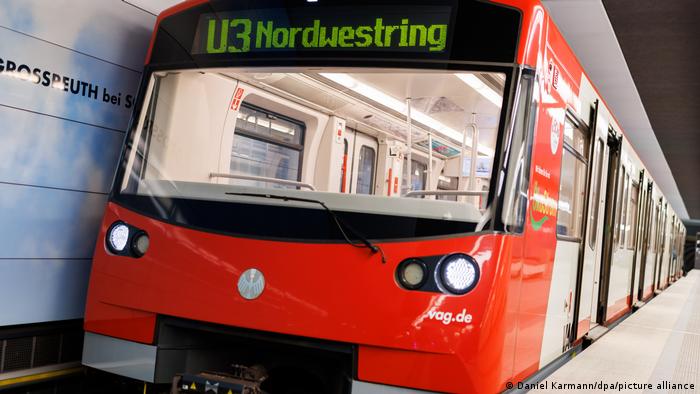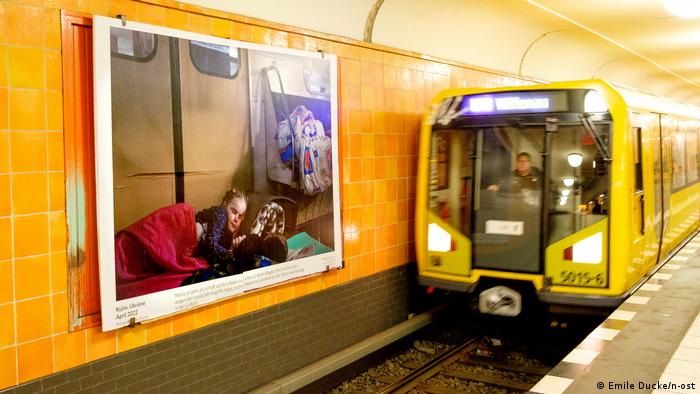Trains are already automated in more than 60 cities around the world, which means that nobody is behind the wheel. In Germany, the Nuremberg subway has been the lone pioneer since 2008. But that should change.

Driverless subway in Nuremberg – The fully automatic subway (U3) at the platform in Großreuth subway station
Around 96,000 train and bus drivers work in local public transport in Germany – but almost half of them will retire in the next few years. Around 40,000 jobs would have to be filled by 2030, says Eike Arnold, spokesman for the Association of German Transport Companies. “We are desperately looking for drivers.”
The technology that makes it possible to do without drivers already exists. Autonomous buses are already being tested in dozens of cities, but so far there is only a driverless subway in Germany in Nuremberg. Why only there?
More passengers due to higher frequency
Computer driving is much easier on rails in a tunnel than on the road where cars, cyclists and pedestrians intersect. Highly automated, trains can also run one behind the other at much shorter intervals, at 100-second intervals, such as on the main route in Nuremberg, for example. According to the manufacturer Siemens, up to 30 percent more passengers can be transported on existing routes.
Thanks to anticipatory starting and braking, “autonomous trains also consume significantly less drive energy and contribute to reduced wear and tear on vehicles and rails,” says Axel Schuppe, Managing Director of the German Railway Industry Association.

German pioneer Nuremberg: If the driver isn't on board, the passengers have a new perspective
“Millions of passengers in over 60 cities around the world – including London, Paris, Vancouver, Sao Paulo, Mexico and Singapore – use automated trains every day,” says Schuppe. “When new lines are built today, the trains should almost always run autonomously, and automation is also planned.”
Like now in Hamburg. The new U5 “will run automatically and without drivers,” says Hochbahn spokesman Christoph Kreienbaum. With the existing network, on the other hand, the costs and technical effort would be “in no reasonable proportion to the yield”. Partial automation there should soon enable a 100-second cycle: the computer controls between the stations, the drivers take care of arrival and departure.
First France, then Nuremberg
Pioneer for the 40 years ago, the driverless subway was the metro in the northern French city of Lille. Nuremberg followed 15 years ago, in 2008, with the newly built U3 line. For two years it ran on the main route in mixed operation with the driver-controlled U2. This was then also automated, step by step and during operation.
The necessary technology cost an additional 110 million euros. But it was worth it long ago, says Elisabeth Seitzinger, spokeswoman for the Nuremberg transport company VAG. “We wouldn't give that up today!” The timetable is denser. Fewer vehicles and 105 fewer subway drivers are needed. And the operation is more flexible: when there is a large rush, trains can be brought in quickly from the depot without a driver having to be fetched from the end of the day. “More performance, less effort”, is the conclusion of the VAG.
Around 70 million passengers travel through Nuremberg in driverless trains every year. The passengers did not show any reservations, “it was well received from the start, it wasn't an issue,” says Seitzinger. Where the driver's cab is in conventional subways, the passengers stand here and have a clear view of the route.
For safety reasons, the platforms of many driverless subways are separated from the tracks by barriers. Only when the train stops do the doors of the barrier open. In Nuremberg, on the other hand, they rely on sensors in the tracks: If something falls onto the track, they trigger emergency braking.
 < p>The Berlin subway is still driven humanely – there is no AI for Berlin humor and friendliness
< p>The Berlin subway is still driven humanely – there is no AI for Berlin humor and friendliness
Digitization alone is progress
There are hardly any light rail vehicles that “do not think about automation at least in the future,” says Schuppe. “The business with digital control and safety technology, which is a prerequisite for driverless driving, is picking up noticeably.” The railway industry is increasingly receiving inquiries from municipal transport companies.
Many cities are now rolling out the basic technology for train automation, “for example Berlin, Frankfurt am Main or Munich,” says the association manager. This makes the network more efficient even without expansion. “In the future, trains in the Frankfurt network should be able to run every two minutes, for example.”
Is Berlin trendy?
The Munich transport company MVG had planned a pilot test with platform screen doors, but canceled it again for cost reasons. Fully automating the subway would require new rolling stock and infrastructure. “Converting the existing network to it would cost a lot of money and take many years to decades,” says spokesman Maximilian Kaltner.
The Berlin BVG also wants to gradually automate the subway so that denser intervals are possible. But operating the network, some of which dates back to the imperial era, with its many listed subway stations without a driver would be a huge technical and financial challenge, says spokesman Markus Falkner. In the long term, the trend is towards autonomous driving, says VDV spokesman Arnold. Where a new subway or a new line is being built or where infrastructure and trains have to be completely renewed, things are faster. But drivers would still be needed for decades.

